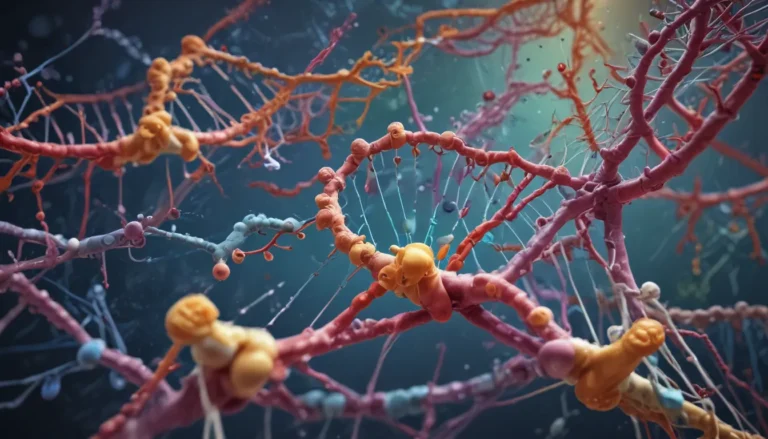A Note About Images: The images used in our articles are for illustration purposes only and may not exactly match the content. They are meant to engage readers, but the text should be relied upon for accurate information.
Are you curious about the intricate dance that occurs between a substrate molecule and its binding site on a protein or enzyme? Substrate binding is a fundamental process in biology that underpins a myriad of vital cellular functions. From enzymatic reactions to signal transduction, the interaction between substrates and enzymes is a cornerstone of life as we know it.
In this comprehensive guide, we will unravel nine surprising facts about substrate binding that will elevate your understanding of this critical biological process. From the specificity of binding sites to the intricate interplay of enzymes and substrates, prepare to be captivated by the complexity and significance of substrate binding in cellular systems.
Unlocking the World of Substrate Binding
- Substrate binding is akin to a lock and key mechanism, where enzymes and specific substrates fit together seamlessly to initiate essential chemical reactions in living organisms.
- Exploring the nuances of substrate binding can pave the way for groundbreaking advancements in medicine, offering innovative treatments for a wide array of diseases.
The Crucial Role of Substrate Binding in Enzymatic Reactions
Enzymes, the molecular architects of biochemical transformations, rely on substrate binding to kickstart the conversion of substrates into products. Through the formation of an enzyme-substrate complex at the active site, enzymes ensure precise positioning and alignment for the catalytic reaction to occur.
Specificity at Its Finest: The High Precision of Substrate Binding
Many enzymes exhibit remarkable specificity, recognizing and binding only to particular substrates that snugly fit into their active sites. This exquisite selectivity ensures that reactions proceed with precision, avoiding wasteful or harmful interactions.
The Intriguing World of Conformational Changes
The act of substrate binding can induce structural rearrangements within the active site of enzymes. These conformational changes are instrumental in optimizing the interaction between enzymes and substrates, ultimately enhancing catalytic efficiency and accelerating reaction rates.
Embracing Reversibility: The Dynamic Nature of Substrate Binding
In some scenarios, substrate binding is not a one-time affair but rather a reversible process. This flexibility allows substrates to bind and dissociate from enzymes multiple times, fine-tuning enzymatic activity and dynamically regulating cellular processes.
The Impact of Cofactors on Substrate Binding
Certain enzymes rely on cofactors, non-protein molecules such as metal ions or organic compounds, to facilitate optimal substrate binding. These cofactors play a pivotal role in enhancing catalytic capabilities, aligning substrates correctly, and stabilizing the enzyme-substrate complex.
Unveiling the Complexity of Multiple Binding Sites
Some enzymes possess multiple binding sites, enabling the simultaneous or sequential binding of substrates. This feature allows for intricate biological reactions involving multiple substrates or the transfer of functional groups between molecules.
Allosteric Wonders: Regulation through Molecular Interactions
Allosteric regulation involves the binding of a molecule at one site on an enzyme, influencing the affinity or activity of another site. In substrate binding, allosteric interactions regulate enzyme-substrate interactions, modulating the rate of enzymatic reactions.
The Influence of Environmental Factors on Substrate Binding
Physicochemical conditions such as pH and temperature exert a significant influence on binding affinity and enzymatic activity. Optimal pH and temperature conditions are crucial for maintaining enzyme functionality and ensuring efficient substrate binding and reaction kinetics.
Harnessing Substrate Binding for Therapeutic Innovations
Given the pivotal role of substrate binding in enzymatic reactions, it serves as an attractive target for drug development. By designing molecules that selectively disrupt or enhance the binding process, researchers can develop novel therapies to modulate biological pathways and combat various diseases.
Delving Deeper into the Realm of Substrate Binding
Substrate binding stands as a captivating and indispensable process in the tapestry of biology. As we unravel the mysteries of interaction between substrates and enzymes, we gain profound insights into disease mechanisms and pave the way for targeted therapeutic interventions.
The world of substrate binding beckons researchers to embark on a journey of discovery, unearthing new breakthroughs and advancements in biological sciences. It is a realm that continues to intrigue and inspire, offering boundless opportunities for further exploration and innovation.
Exploring Substrate Binding: Your FAQs Answered
Q: What is substrate binding?
A: Substrate binding refers to the interaction between a substrate molecule and its corresponding binding site on a protein or enzyme.
Q: Why is substrate binding important?
A: Substrate binding is crucial for various biological processes, including enzymatic reactions, signal transduction, and drug interactions.
Q: What factors influence substrate binding?
A: Factors such as binding affinity, allosteric effects, and structural compatibility influence substrate binding.
Q: Can substrate binding be regulated?
A: Yes, substrate binding can be regulated through mechanisms like allosteric regulation and effector molecules.
Q: How does substrate binding affect enzyme activity?
A: Substrate binding is essential for initiating enzymatic reactions and converting substrates into products.
Q: Are there diseases associated with abnormalities in substrate binding?
A: Yes, abnormalities in substrate binding can contribute to various diseases, including genetic disorders and metabolic diseases.
Q: How is substrate binding studied?
A: Techniques such as binding assays, X-ray crystallography, and molecular modeling are used to study substrate binding.
Q: Can substrate binding be targeted for therapeutic interventions?
A: Yes, targeting substrate binding sites on proteins or enzymes can lead to the development of therapeutic interventions and drugs.
Q: What are some recent advancements in understanding substrate binding?
A: Recent advancements include the discovery of novel binding sites, computational tools for predicting interactions, and exploring allosteric modulation in substrate binding.
Dive Deeper into the World of Enzymes
Your exploration of substrate binding opens the door to a fascinating realm of biochemical intricacies. Delve into the realm of enzyme kinetics to unearth the inner workings of these remarkable molecules. Explore the vibrant world of active sites, where enzymatic reactions unfold with precision. And remember to appreciate the artistry of protein structures, which serve as the blueprint for enzymatic function.
Your Feedback Matters
Our commitment to delivering accurate and engaging content is unwavering. Each fact shared on our platform is a contribution from individuals like you, enriching our repository with diverse insights and knowledge. Every submission undergoes rigorous review by our dedicated editors, ensuring that the information we provide is not just captivating but also credible. Trust in our dedication to excellence as you embark on a journey of exploration and learning alongside us.
Through the lens of substrate binding, the intricate dance between enzymes and substrates comes into focus, revealing a world of complexity and wonder. As you embark on your journey of discovery, may the marvels of biological processes continue to inspire and captivate your imagination.






